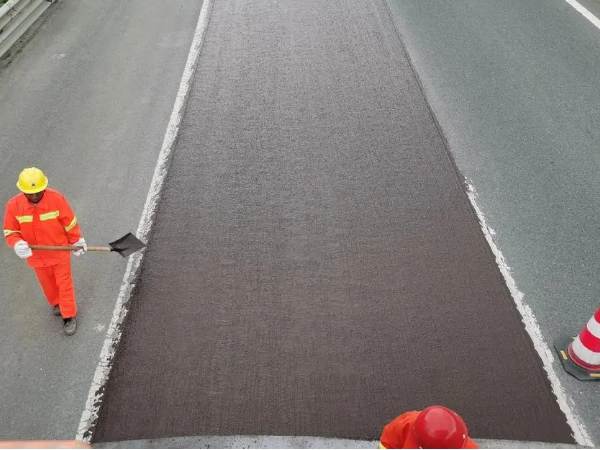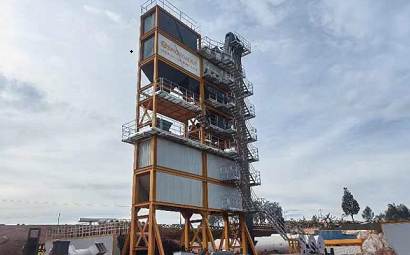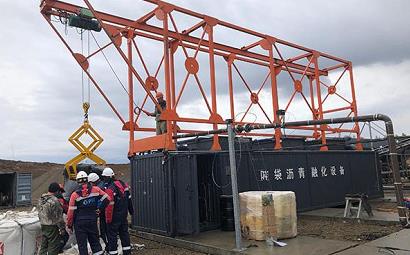For microsurfacing, each mix ratio developed is a compatibility experiment, which is affected by multiple variables such as emulsified asphalt and aggregate type, aggregate gradation, water and emulsified asphalt amounts, and types of mineral fillers and additives. . Therefore, on-site simulation test analysis of laboratory samples under specific engineering conditions has become the key to evaluate the performance of micro-surface mixtures. Several commonly used tests are introduced as follows:
1. Mixing test
The main purpose of the mixing test is to simulate the paving construction site. The compatibility of emulsified asphalt and aggregates is verified through the molding state of the micro-surface, and the specific and accurate mixing time is obtained. If the mixing time is too long, the road surface will not reach the early strength and it will not be open to traffic; if the mixing time is too short, the paving construction will not be smooth. The construction effect of micro-surfacing is easily affected by the environment. Therefore, when designing the mix, the mixing time must be tested under adverse temperatures that may occur during construction. Through a series of performance tests, the factors affecting the performance of the micro-surface mixture are analyzed as a whole. The conclusions drawn are as follows: 1. Temperature, high temperature environment can significantly reduce the mixing time; 2. Emulsifier, the greater the dose of emulsifier, the longer the mixing time; 3. Cement, adding cement may extend or shorten the mixture. The mixing time is determined by the properties of the emulsifier. Generally, the greater the amount, the shorter the mixing time. 4. The amount of mixing water, the greater the mixing water, the longer the mixing time. 5. The pH value of the soap solution is generally 4-5 and the mixing time is long. 6. The greater the zeta potential of the emulsified asphalt and the double electric layer structure of the emulsifier, the longer the mixing time.


2. Adhesion test
Mainly tests the early strength of the micro surface, which can accurately measure the initial setting time. Sufficient early strength is the prerequisite to ensure the opening time to traffic. The adhesion index needs to be evaluated comprehensively, and the measured adhesion value should be combined with the damage status of the sample to determine the initial setting time and open traffic time of the mixture.
3. Wet wheel wear test
The wet wheel abrasion test simulates the road's ability to resist tire wear when wet.
The one-hour wet wheel abrasion test can determine the abrasion resistance of the microsurface functional layer and the coating properties of asphalt and aggregate. The water damage resistance of the micro-surface modified emulsified asphalt mixture is represented by the 6-day wear value, and the water erosion of the mixture is examined through a long soaking process. However, the damage of water is not only reflected in the replacement of the asphalt membrane, but also the change in the phase state of the water can cause damage to the mixture. The 6-day immersion abrasion test did not take into account the impact of the freeze-thaw cycle of water on the ore in seasonal freezing areas. The frost heave and peeling effect caused by the asphalt film on the surface of the material. Therefore, based on the 6-day water immersion wet wheel abrasion test, it is planned to adopt the freeze-thaw cycle wet wheel abrasion test to more fully reflect the adverse effects of water on the micro-surface mixture.
4. Rutting deformation test
Through the rutting deformation test, the wheel track width deformation rate can be obtained, and the anti-rutting ability of the micro-surface mixture can be evaluated. The smaller the width deformation rate, the stronger the ability to resist rutting deformation and the better the high temperature stability; conversely, the worse the ability to resist rutting deformation. The study found that the wheel track width deformation rate has a clear correlation with the emulsified asphalt content. The greater the emulsified asphalt content, the worse the rutting resistance of the micro-surface mixture. He pointed out that this is because after the polymer emulsified asphalt is incorporated into the cement-based inorganic binder, the elastic modulus of the polymer is much lower than that of cement. After the compound reaction, the properties of the cementitious material change, resulting in a reduction in the overall rigidity. As a result, wheel track deformation increases. In addition to the above tests, different test situations should be set up according to different situations and different mix ratio tests should be used. In actual construction, the mix ratio, especially the water consumption of the mixture and the cement consumption, can be appropriately adjusted according to different weather and temperatures.
Conclusion: As a preventive maintenance technology, micro-surfacing can greatly improve the comprehensive performance of the pavement and effectively eliminate the impact of various diseases on the pavement. At the same time, it has low cost, short construction period and good maintenance effect. This article reviews the composition of micro-surfacing mixtures, analyzes their impact on the whole, and briefly introduces and summarizes the performance tests of micro-surfacing mixtures in current specifications, which has positive reference significance for future in-depth research.
Although micro-surfacing technology has become increasingly mature, it should still be further researched and developed to improve the technical level to better improve and enhance the comprehensive performance of highways and meet the needs of traffic operations. In addition, during the micro-surfacing construction process, many external conditions have a relatively direct impact on the quality of the project. Therefore, the actual construction conditions must be considered and more scientific maintenance measures must be selected to ensure that the micro-surfacing construction can be implemented smoothly and achieve To improve the maintenance effect.
 Albanian
Albanian  Russian
Russian  Arabic
Arabic  Amharic
Amharic  Azerbaijani
Azerbaijani  Irish
Irish  Estonian
Estonian  Odia (Oriya)
Odia (Oriya)  Basque
Basque  Belarusian
Belarusian  Bulgarian
Bulgarian  Icelandic
Icelandic  Polish
Polish  Bosnian
Bosnian  Persian
Persian  Afrikaans
Afrikaans  Tatar
Tatar  Danish
Danish  German
German  French
French  Filipino
Filipino  Finnish
Finnish  Frisian
Frisian  Khmer
Khmer  Georgian
Georgian  Gujarati
Gujarati  Kazakh
Kazakh  Haitian Creole
Haitian Creole  Korean
Korean  Hausa
Hausa  Dutch
Dutch  Kyrgyz
Kyrgyz  Galician
Galician  Catalan
Catalan  Czech
Czech  Kannada
Kannada  Corsican
Corsican  Croatian
Croatian  Kurdish (Kurmanji)
Kurdish (Kurmanji)  Latin
Latin  Latvian
Latvian  Lao
Lao  Lithuanian
Lithuanian  Luxembourgish
Luxembourgish  Kinyarwanda
Kinyarwanda  Romanian
Romanian  Malagasy
Malagasy  Maltese
Maltese  Marathi
Marathi  Malayalam
Malayalam  Malay
Malay  Macedonian
Macedonian  Maori
Maori  Mongolian
Mongolian  Bengali
Bengali  Myanmar (Burmese)
Myanmar (Burmese)  Hmong
Hmong  Xhosa
Xhosa  Zulu
Zulu  Nepali
Nepali  Norwegian
Norwegian  Punjabi
Punjabi  Portuguese
Portuguese  Pashto
Pashto  Chichewa
Chichewa  Japanese
Japanese  Swedish
Swedish  Samoan
Samoan  Serbian
Serbian  Sesotho
Sesotho  Sinhala
Sinhala  Esperanto
Esperanto  Slovak
Slovak  Slovenian
Slovenian  Swahili
Swahili  Scots Gaelic
Scots Gaelic  Cebuano
Cebuano  Somali
Somali  Tajik
Tajik  Telugu
Telugu  Tamil
Tamil  Thai
Thai  Turkish
Turkish  Turkmen
Turkmen  Welsh
Welsh  Uyghur
Uyghur  Urdu
Urdu  Ukrainian
Ukrainian  Uzbek
Uzbek  Spanish
Spanish  Hebrew
Hebrew  Greek
Greek  Hawaiian
Hawaiian  Sindhi
Sindhi  Hungarian
Hungarian  Shona
Shona  Armenian
Armenian  Igbo
Igbo  Italian
Italian  Yiddish
Yiddish  Hindi
Hindi  Sundanese
Sundanese  Indonesian
Indonesian  Javanese
Javanese  Yoruba
Yoruba  Vietnamese
Vietnamese  Hebrew
Hebrew  Chinese (Simplified)
Chinese (Simplified)







